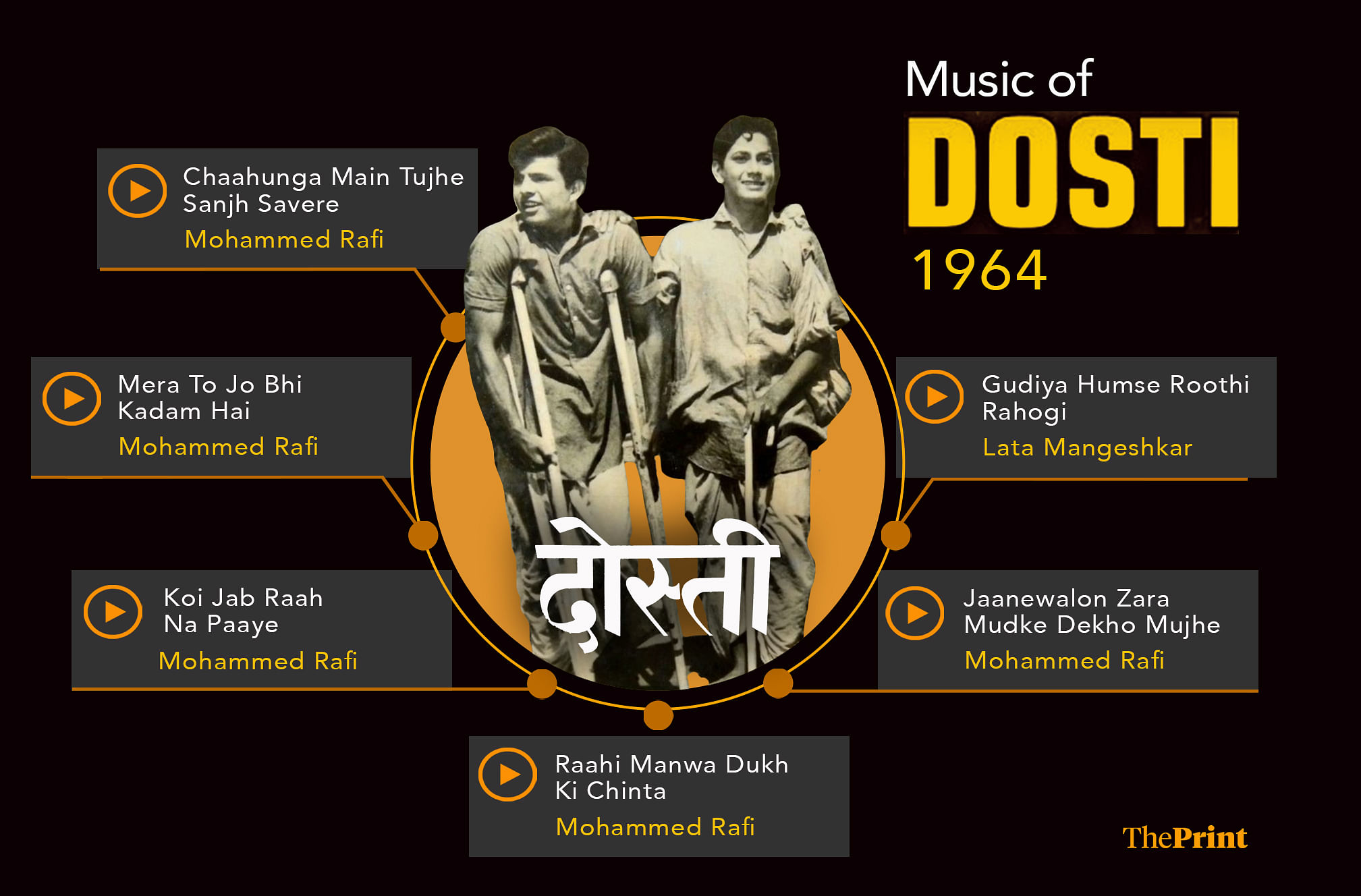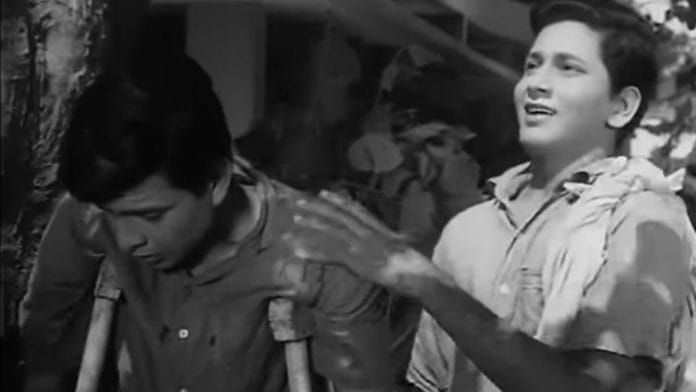In the years after Independence, Bollywood was flush with Nehruvian idealism. Filmmakers like Guru Dutt and Bimal Roy used movies as a vehicle for social commentary. The underdog was the hero. Satyen Bose’s 1964 award-winning film Dosti is a flag bearer of this genre—the story of two teenage boys who make it against all odds while living in slums and busking for money.
The year it was released, Hindi cinema was dominated by star-studded spectacles like Vyjayanthimala and Raj Kapoor’s Sangam, Shammi Kapoor and Sharmila Tagore’s Kashmir Ki Kali, Shammi Kapoor and Dilip Kumar’s Leader, Vyjayanthimala’s Zindagi, and Manoj Kumar-Sadahna’s Woh Kaun Thi. Dosti, like its heroes, was the underdog.
Its actors, Sudhir Kumar and Sushil Kumar, were not superstars. The music was directed by Laxmikant-Pyarelal, when they were still not the powerhouse they eventually became. And the production house, Rajshri Productions, had just one film under its belt.
Given these odds, Dosti, a remake of the Bengali film Lalu Bhulu (1959), could easily have been buried under the glitzy releases. Instead, it became the third highest-grossing film of the year, earning Rs 2 crore at the box office. The songs had a lot to do with its success. It also won six of the seven Filmfare Awards it was nominated for including best film and best music director, and went on to win the National Film Award for Best Feature Film in Hindi.
Music – a strong pillar
Songs like Chaahunga Main Tujhe Sanjh Savere by Mohammed Rafi and Gudiya Humse Roothi Rahogi by Lata Mangeshkar elevate this movie, making it more than mere melodrama on the lives of two young men.
Ramu (Sushil Kumar) loses his mobility in an accident, his mother to illness, and his education to poverty. Alone on the streets, he meets Mohan (Sudhir Kumar), who is blind and separated from his sister. Ramu refuses to beg for a living, choosing to play his harmonica instead.

He’s joined by Mohan, and together they sing songs that tug at the heartstrings of people in Bombay. The notes from Ramu’s harmonica find a perfect pairing in Mohan’s heartfelt plea: “Jaane waalon zaraa, mudke dekho mujhe. Ek insaan hoon main tumhaari tarah. (Oh passersby, just turn around and look at me. I am also a human being, just like you).” RD Burman plays the harmonica for Ramu.
Majrooh Sultanpuri’s lyrics and Mohammed Rafi’s soulful singing made Dosti’s album memorable and timeless. It was a winning combination. Though initially, the film’s music was met with much scepticism. Most composers were reluctant to join the project as it lacked star power and ‘masala’. There was no hero-villain showdown, no heroine, no glamour, and no romance — it was, in many ways, an art film that saw unexpected commercial success.
However, Laxmikant-Pyarelal took on the challenge. The soundtrack has some of the most memorable melodies of the era, such as Meri Dosti Mera Pyar, which underscores the themes of friendship and resilience. The movie struck a chord with audiences, sending out a message that compelling storytelling can transcend star power.
Also read: ‘Aasha’ explored a different view of one-sided love—that of the woman
A tale of tragedy, hope & friendship
Ramu and Mohan, who are seen as flawed by society, accept each other for who they are. Mohan encourages Ramu to complete his education and Ramu hopes to use that education to become successful and fund Mohan’s eye surgery.
The moment of truth comes when the boys have to part ways due to Ramu’s education. As Mohan sings, Chahunga Main Tujhe Saanjh Savere, he declares that he will never turn to Ramu again.
The film looks beyond their personal struggles, and envisions a more empathetic, educated, and equitable society. The social commentary in this breakout hit touches upon issues such as poverty, disability, and class divide with sensitivity and insight.
Dosti does not shy away from presenting the harsh realities of its characters’ lives, while also emphasising how human connections transcend socio-economic barriers.
The onslaught of tragedies that befall the boys is relentless. They are constantly judged, mocked, and lose the people they love. Bose went out of his way to create an excessively tragic environment—one that could compete with any Thomas Hardy novel. But the two boys are saved from doom at the end by the thread of hope and optimism that runs through the plot.
The film’s climax, where Ramu and Mohan reunite after a period of separation, is a masterclass in emotional cinematography.
The scene is shot in a soft, diffused light, creating a warm, almost ethereal atmosphere. The camera slowly zooms in as they spot each other, capturing the gradual realisation and overwhelming joy on their faces.
Dosti is more than just a film; it is a testament to the power of friendship.
(Edited by Zoya Bhatti)






